Draw an energy profile diagram for a three step-reaction in which first step is slowest and last step is fastest. (Assume that reaction is exothermic) Solution in Kannada
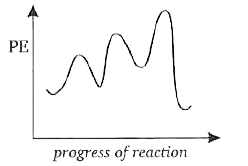
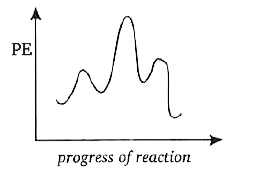
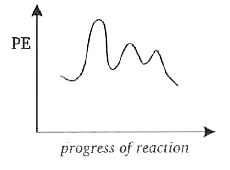
None of these
The correct Answer is:C
Acc. to Arrehenious equation K=Ae−Ea/RT
∴ greater is Ea, the smaller is K i.e., rate of reaction ∝1height of energy barrier
It should be noted that step leading to the height peak will not be rate determining step if the concentration used in some other step is sufficiency high. Since first step is rate determining step.
∴ First peak should be high as is (c).
Topper's Solved these Questions
- HYDROCARBONS (ALKANES) BOOK - MS CHOUHANCHAPTER - HYDROCARBONS (ALKANES) EXERCISE - LEVEL - 2 (1. COMPREHENSION)
3 Videos
- HYDROCARBONS (ALKANES) BOOK - MS CHOUHANCHAPTER - HYDROCARBONS (ALKANES) EXERCISE - LEVEL - 2 (2. COMPREHENSION)
7 Videos
- GRIGNARD REAGENTBOOK - MS CHOUHANCHAPTER - GRIGNARD REAGENTEXERCISE - Level-2 (Subjective Problems)
6 Videos
- HYDROCARBONS (ALKENES)BOOK - MS CHOUHANCHAPTER - HYDROCARBONS (ALKENES)EXERCISE - LEVEL-2
22 Videos
Similar Questions
For the given question (1, 2, 3), consider the following reaction.
 monohalogenation product
monohalogenation product
Light in involved in which step of the reaction :
View SolutionHalogenation is a substitution reaction, where halogen replaces one or more hydrogens of hydrocarbon.
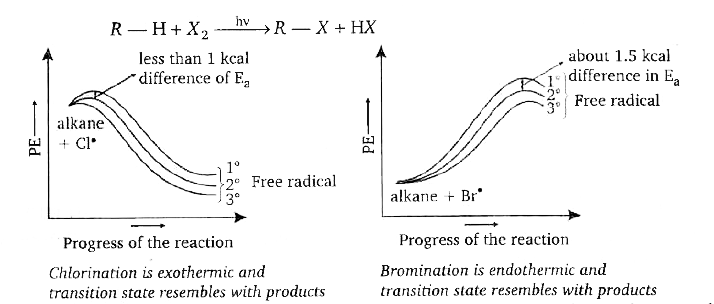
Chlorine free radical make 1∘,2∘,3∘ radicals with almost equal ease, whereas bromine free radicals have a clear preference for the formation of tertiary free radicals. So, bromine is less reactive, and more slective whereas chlorine is less selective and more reactive.
The relative rate of abstraction of hydrogen by Br is
3∘>2∘>1∘(1600)(82)(1)
The relative rate of abstraction of hydrogen by Cl is
3∘>2∘>1∘(5)(3.8)(1)
1-halo-2, 3-dimethyl butane will be obtained in better yields, if halogen is :
View Solution
How many geometrical isomer of (X) is possible ?
View Solution
In each reagent box write a letter designating the best reagent and condition selected from the above list of reagents.

View SolutionEnergy profile diagram for an exothermic reaction. Aoverset(1)toBoverset(2)toCoverset(3)toD , is given below the step/s which is/are not rate determining for forward reaction?
View SolutionEnergy profile digaram for an exothermic reaction A1−−→B2−−→C3−−→D, is given below .

the rate determining step of the reaction is:
View SolutionAbove reaction takes place in three steps :
Step a
Step b

Rate determining step (slow step) is/are
View SolutionThe following graph represents a reaction taking place in three steps. From this, identify the exothermic step of the reaction.
View SolutionDraw energy profile diagrams for exothermic and endothermic reactions.
View SolutionThe following diagram represents the energy profile diagram for a two-step reaction. Calculate the ratio of change in heat energy involved in step I to step II.
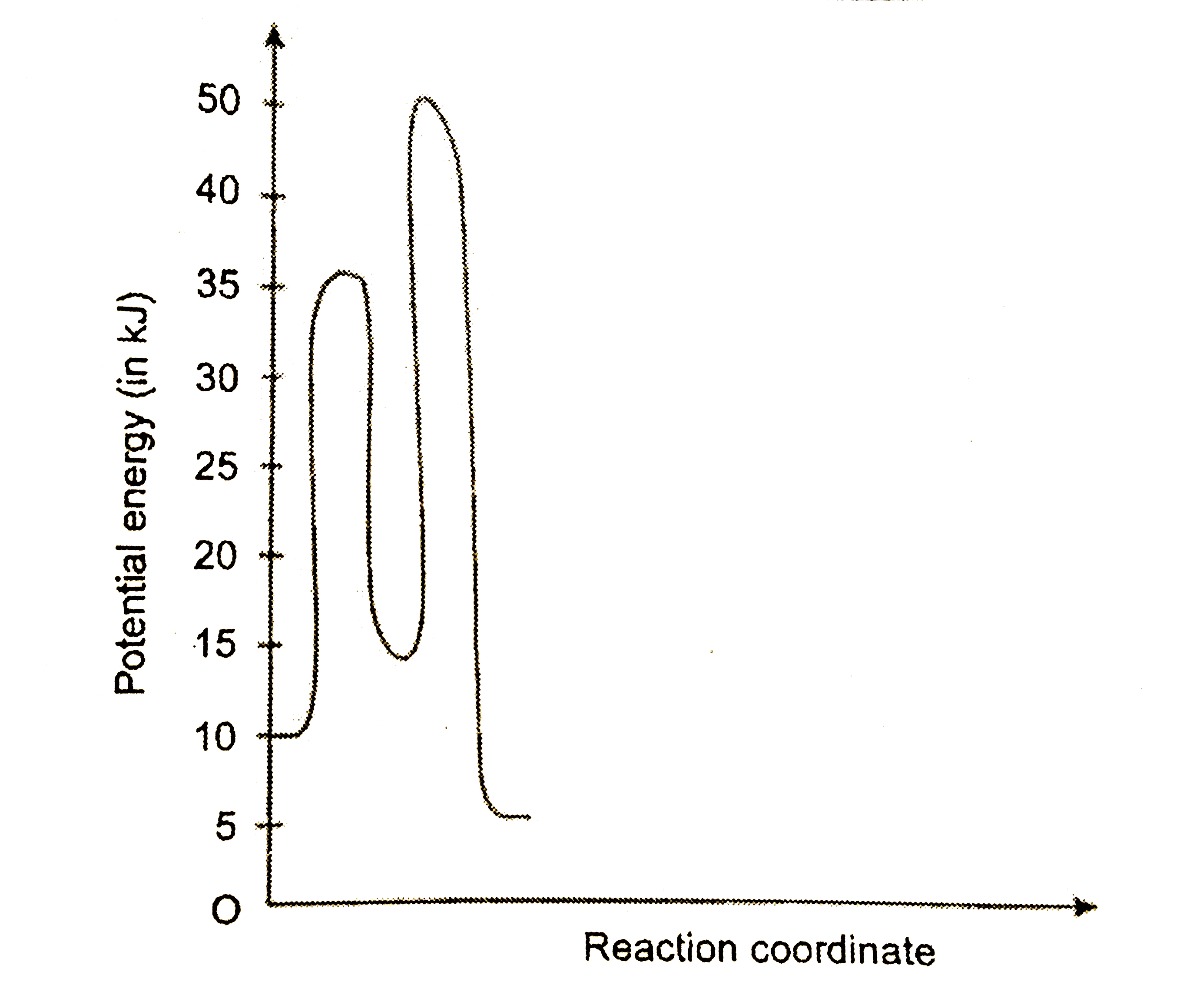
View Solutionकथन - जटिल अभिक्रियाओं का कुल वेग मंदतम मौलिक (मूल) सोपान के वेग द्वारा निर्धारित होता हैं। कारण - प्रत्येक मौलिक सोपान को मंदतम पद के पूर्ण होते तक रुकना पड़ता हैं तथा अभिक्रिया का कुल वेग, मंदतम सोपान के वेग से अधिक नहीं हो सकता।
View SolutionComment on the statement that molecularity of the slowest step in a reaction gives the overall molecularity of the reaction.
View SolutionAssertion: Order and molecularity of a reaction are always equal.
Reason: Complex reactions take place in steps and slowest step determines the reaction order.
View SolutionIn a multistep reaction, the fastest step is the rate determining step.
View SolutionThe slowest step is called the rate determining step of the multistep reaction. (True/False)
View SolutionDerive the rate equation for 1st order reaction. What is activation energy? Draw an energy profile diagram for exothermic reaction.
View Solution
